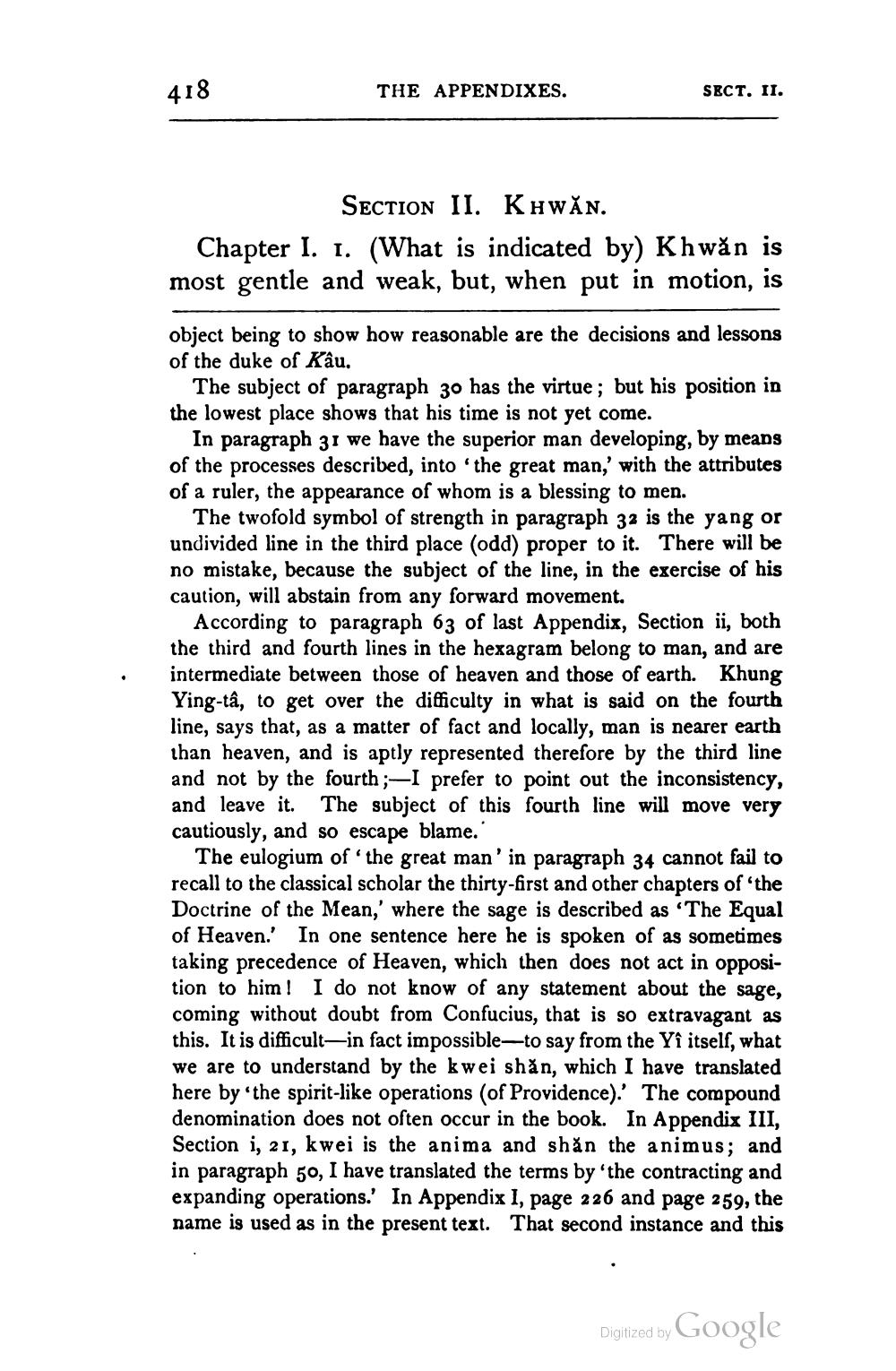________________
418
THE APPENDIXES.
SECT. II.
SECTION II. KhwĂn. Chapter I. 1. (What is indicated by) Khwăn is most gentle and weak, but, when put in motion, is
object being to show how reasonable are the decisions and lessons of the duke of Kâu.
The subject of paragraph 30 has the virtue ; but his position in the lowest place shows that his time is not yet come.
In paragraph 31 we have the superior man developing, by means of the processes described, into the great man,' with the attributes of a ruler, the appearance of whom is a blessing to men.
The twofold symbol of strength in paragraph 32 is the yang or undivided line in the third place (odd) proper to it. There will be no mistake, because the subject of the line, in the exercise of his caution, will abstain from any forward movement.
According to paragraph 63 of last Appendix, Section ii, both the third and fourth lines in the hexagram belong to man, and are intermediate between those of heaven and those of earth. Khung Ying-tâ, to get over the difficulty in what is said on the fourth line, says that, as a matter of fact and locally, man is nearer earth than heaven, and is aptly represented therefore by the third line and not by the fourth ;-I prefer to point out the inconsistency, and leave it. The subject of this fourth line will move very cautiously, and so escape blame.'
The eulogium of 'the great man'in paragraph 34 cannot fail to recall to the classical scholar the thirty-first and other chapters of the Doctrine of the Mean,' where the sage is described as 'The Equal of Heaven.' In one sentence here he is spoken of as sometimes taking precedence of Heaven, which then does not act in opposition to him! I do not know of any statement about the sage, coming without doubt from Confucius, that is so extravagant as this. It is difficult-in fact impossible to say from the Yî itself, what we are to understand by the kwei shăn, which I have translated here by 'the spirit-like operations (of Providence). The compound denomination does not often occur in the book. In Appendix III, Section i, 21, kwei is the anima and shăn the animus; and in paragraph 50, I have translated the terms by the contracting and expanding operations. In Appendix I, page 226 and page 259, the name is used as in the present text. That second instance and this
Digitized by Google




